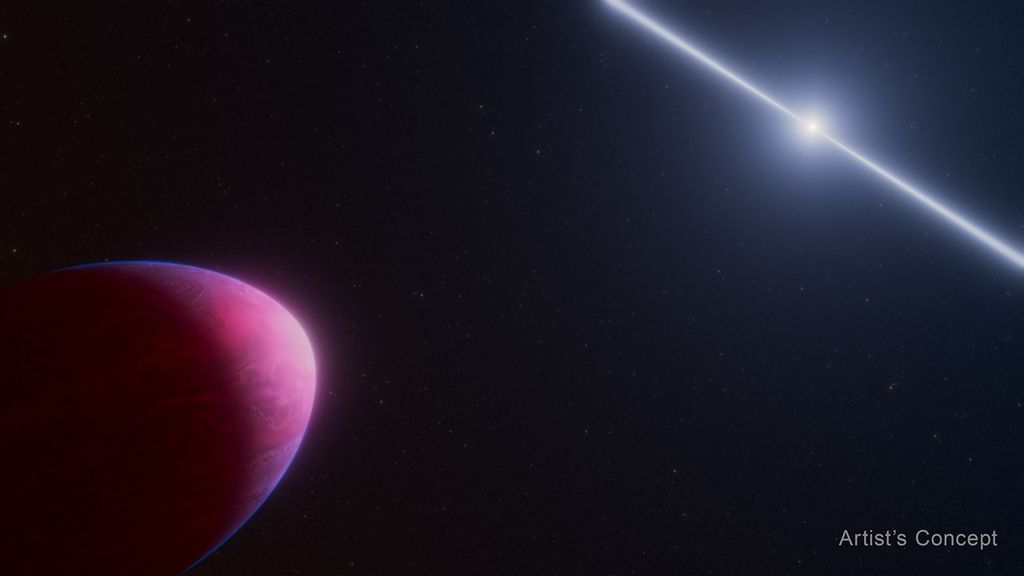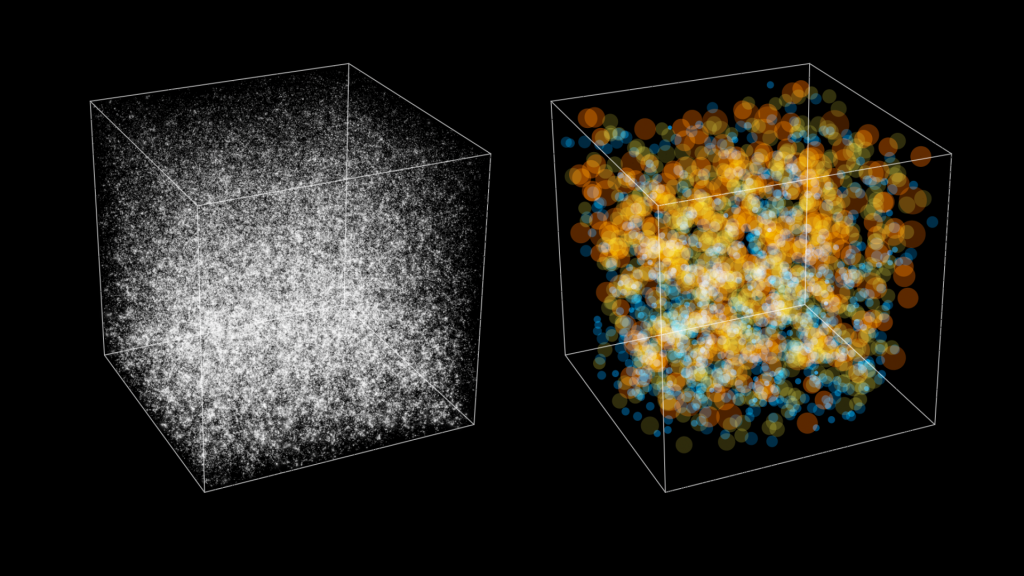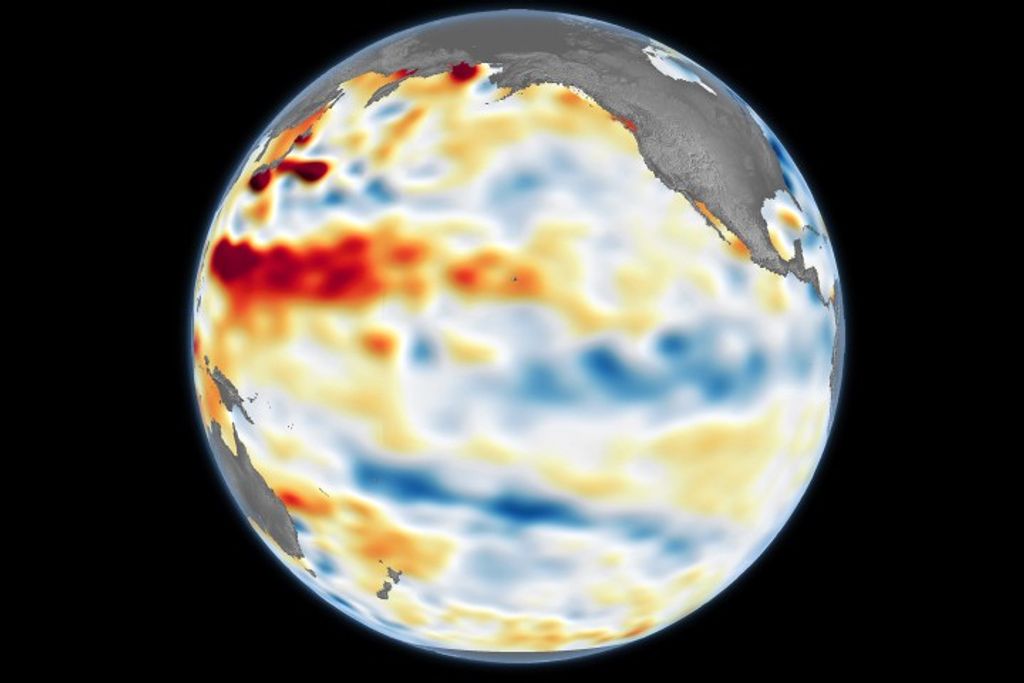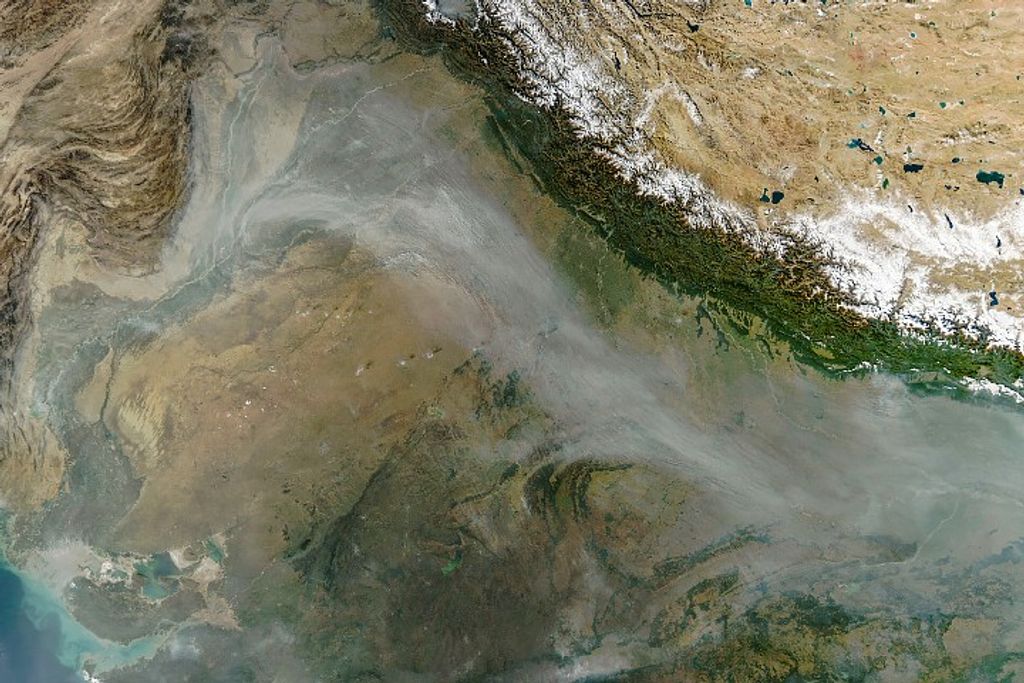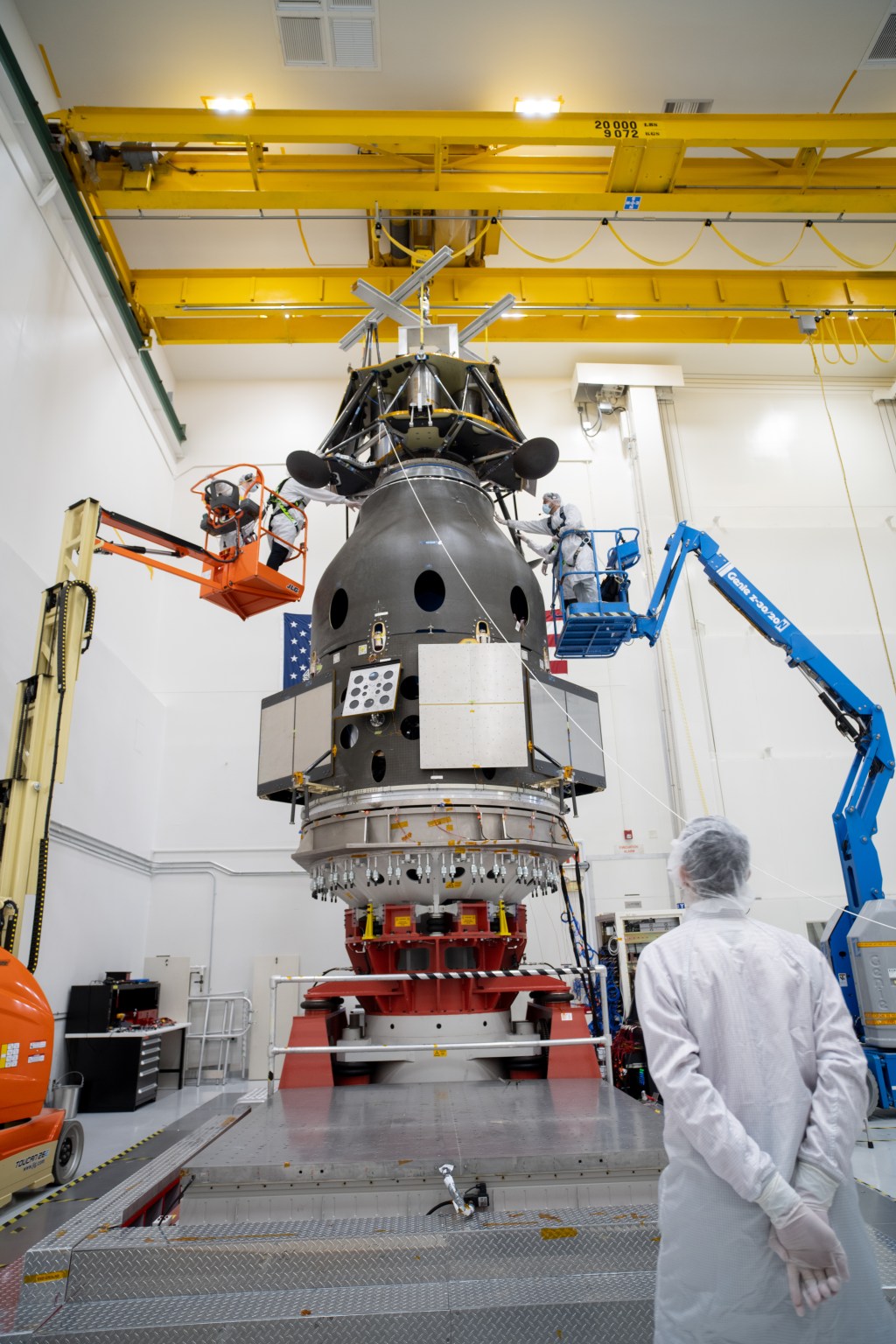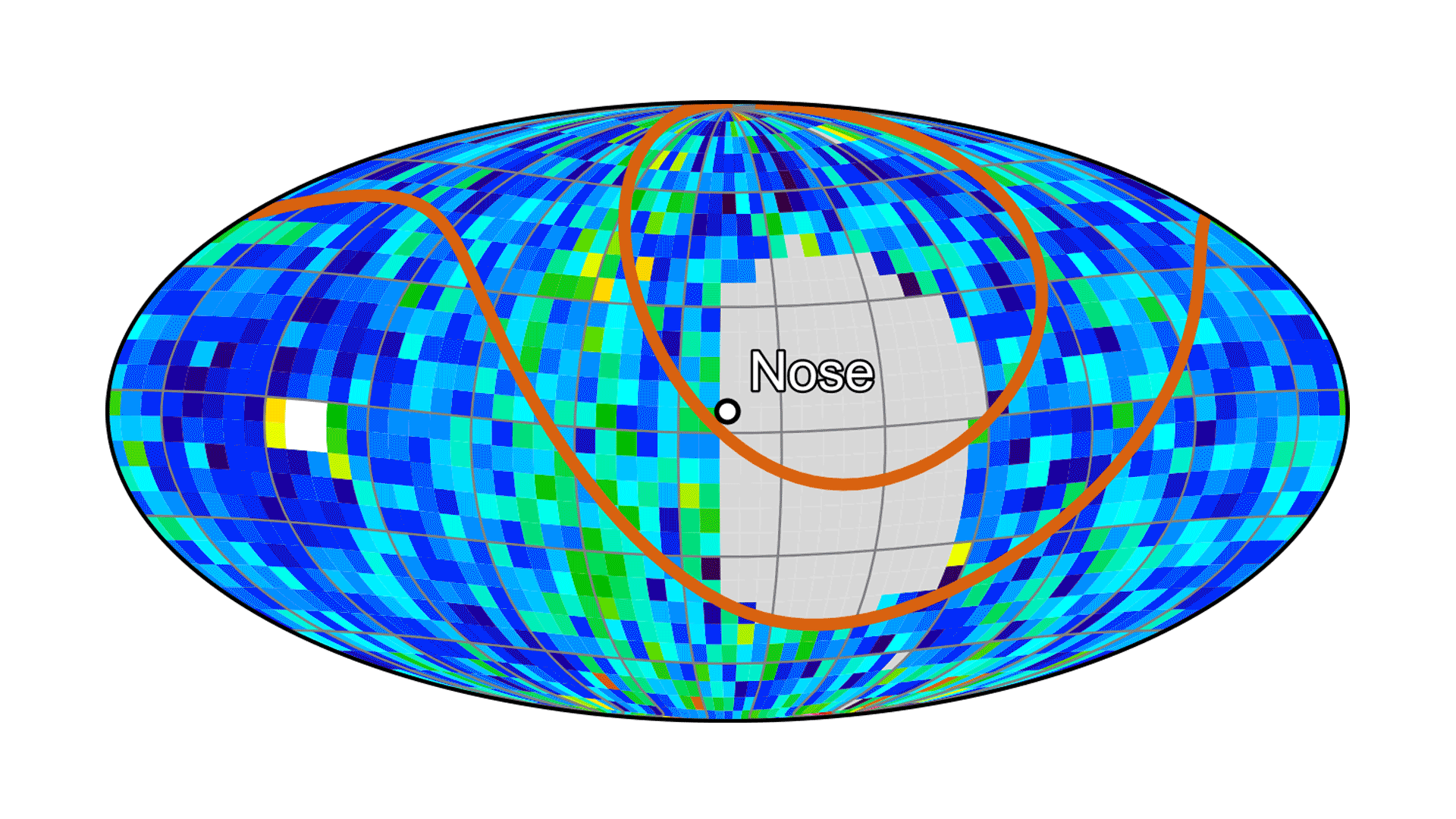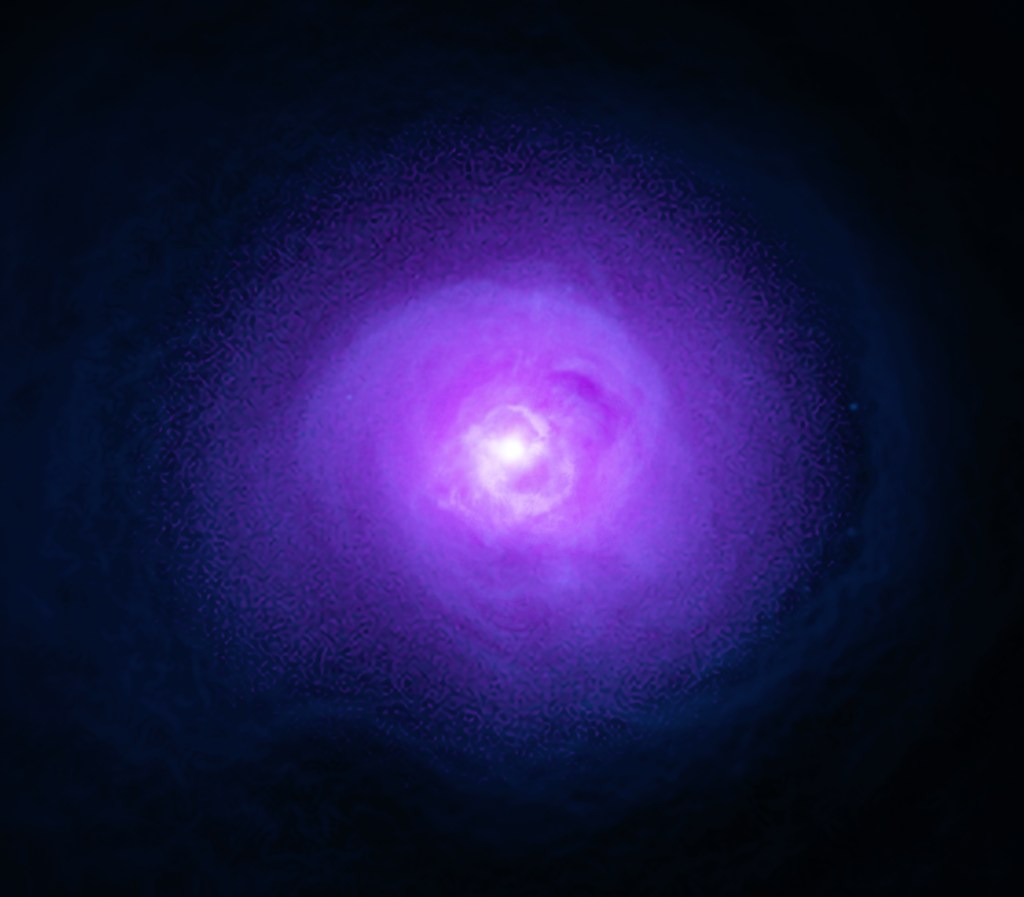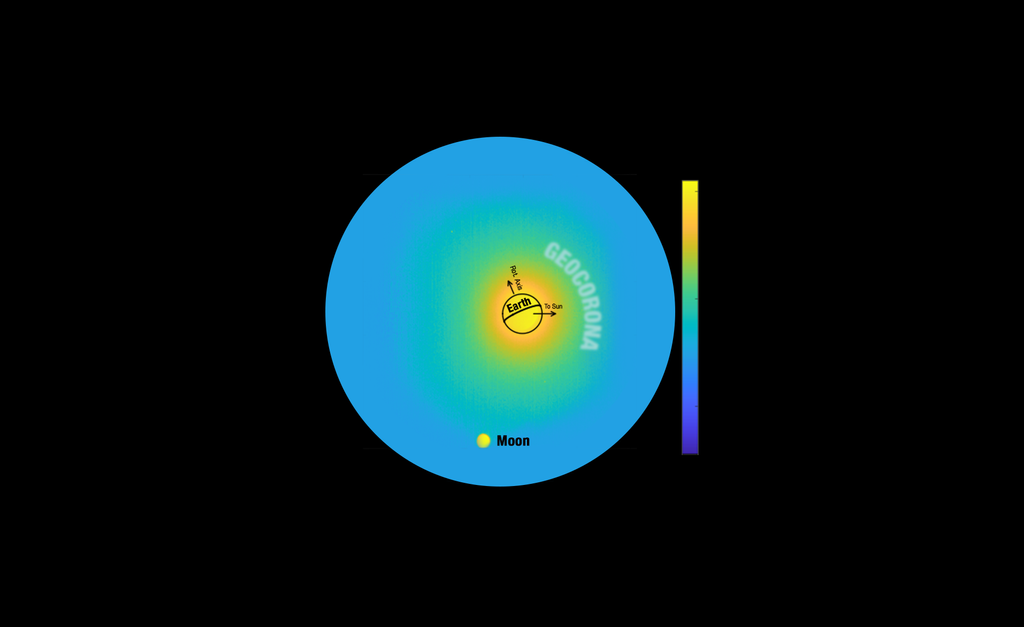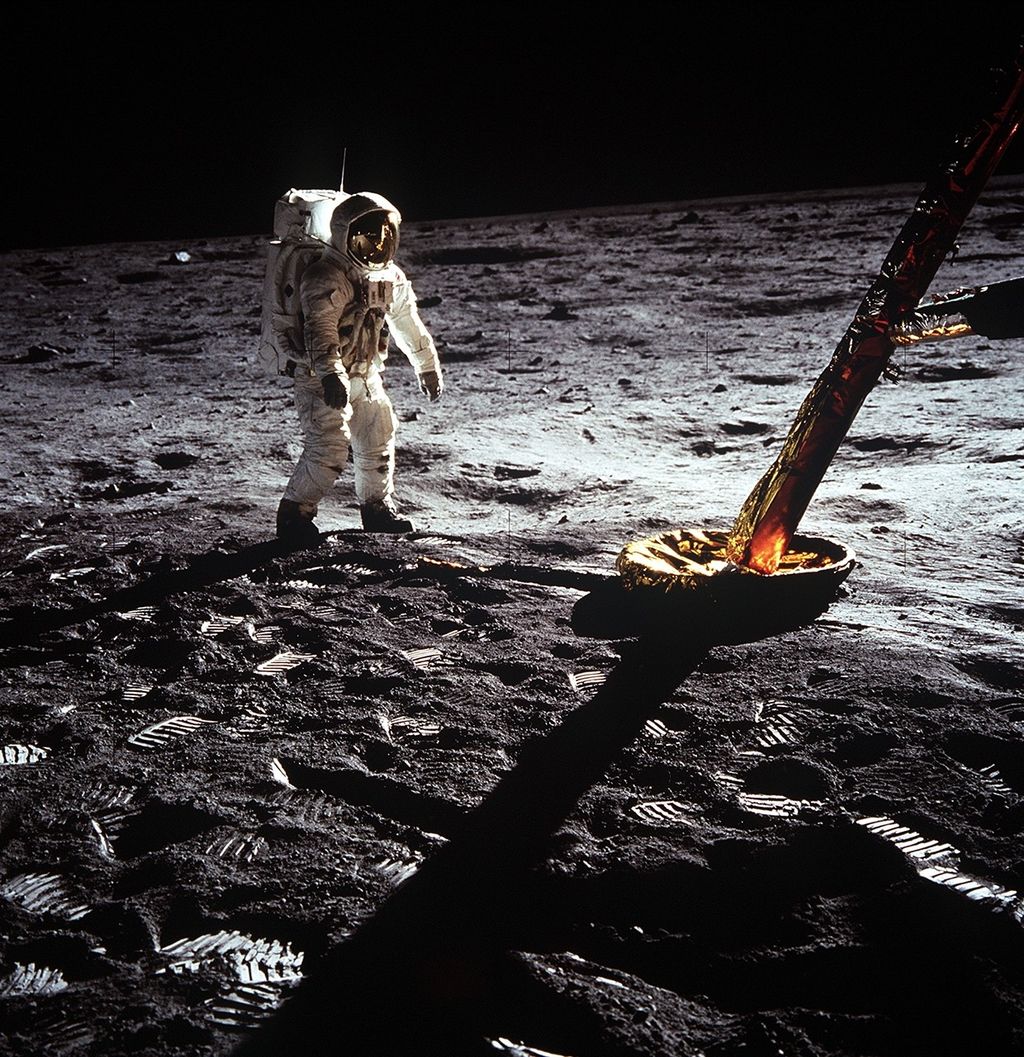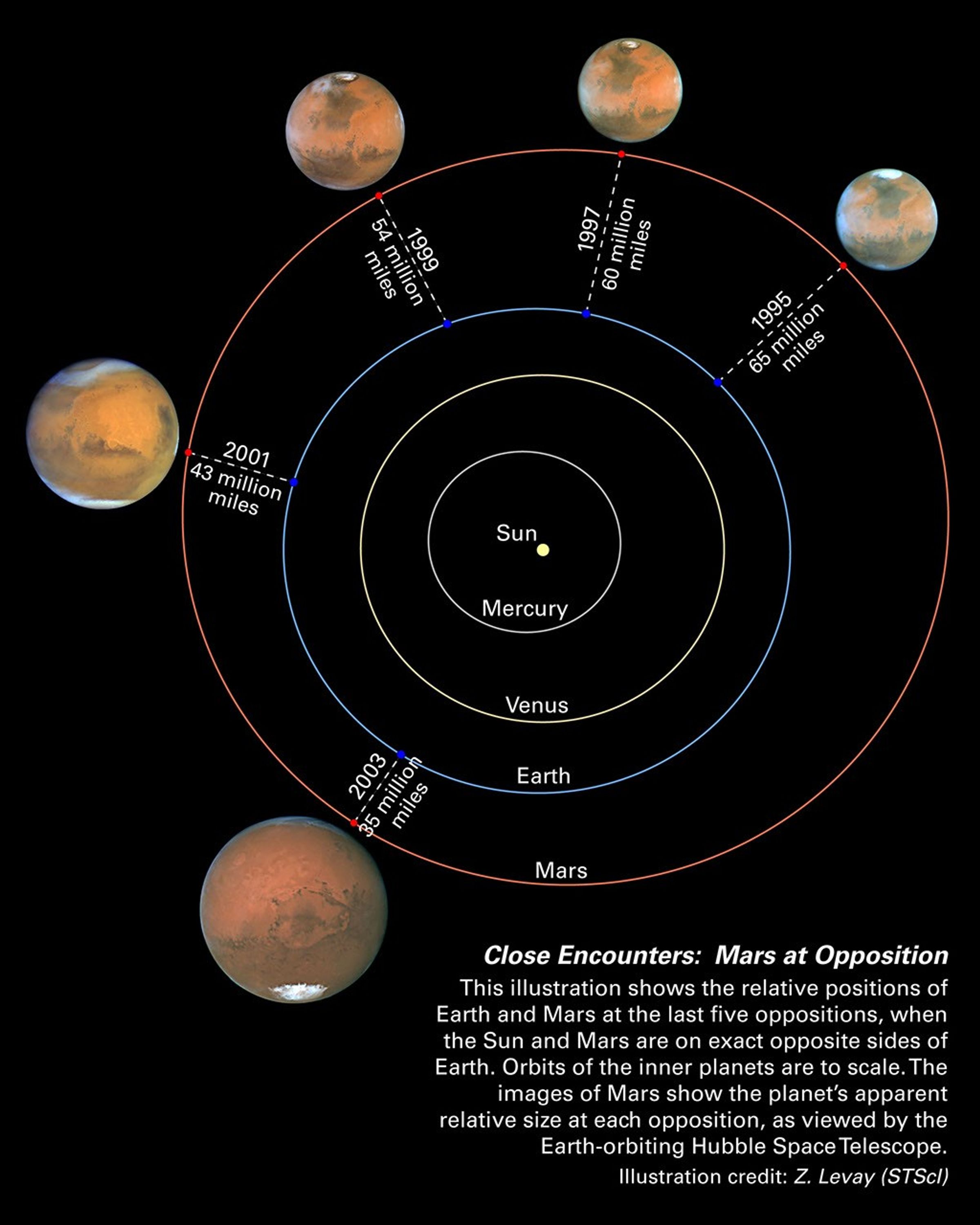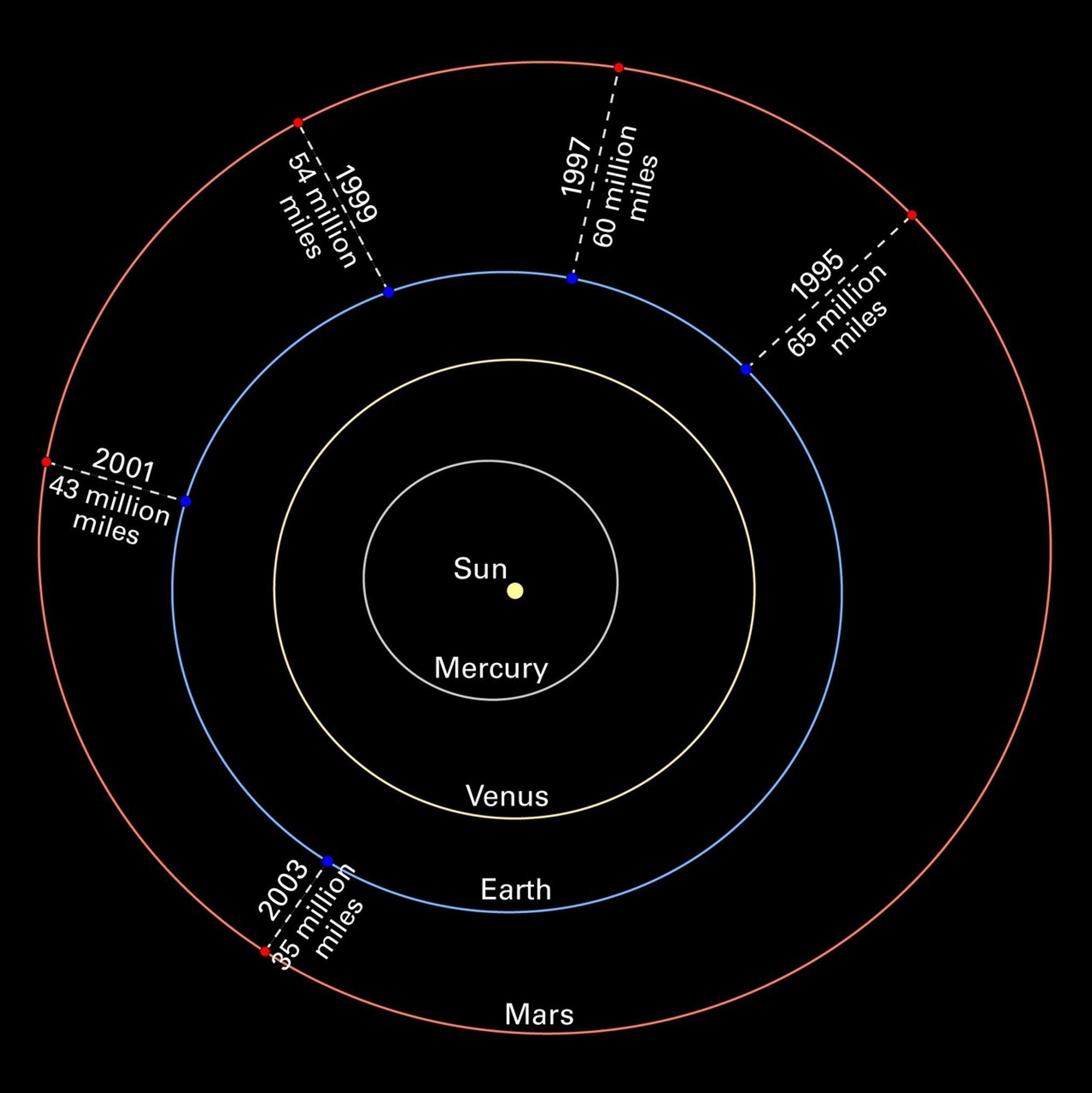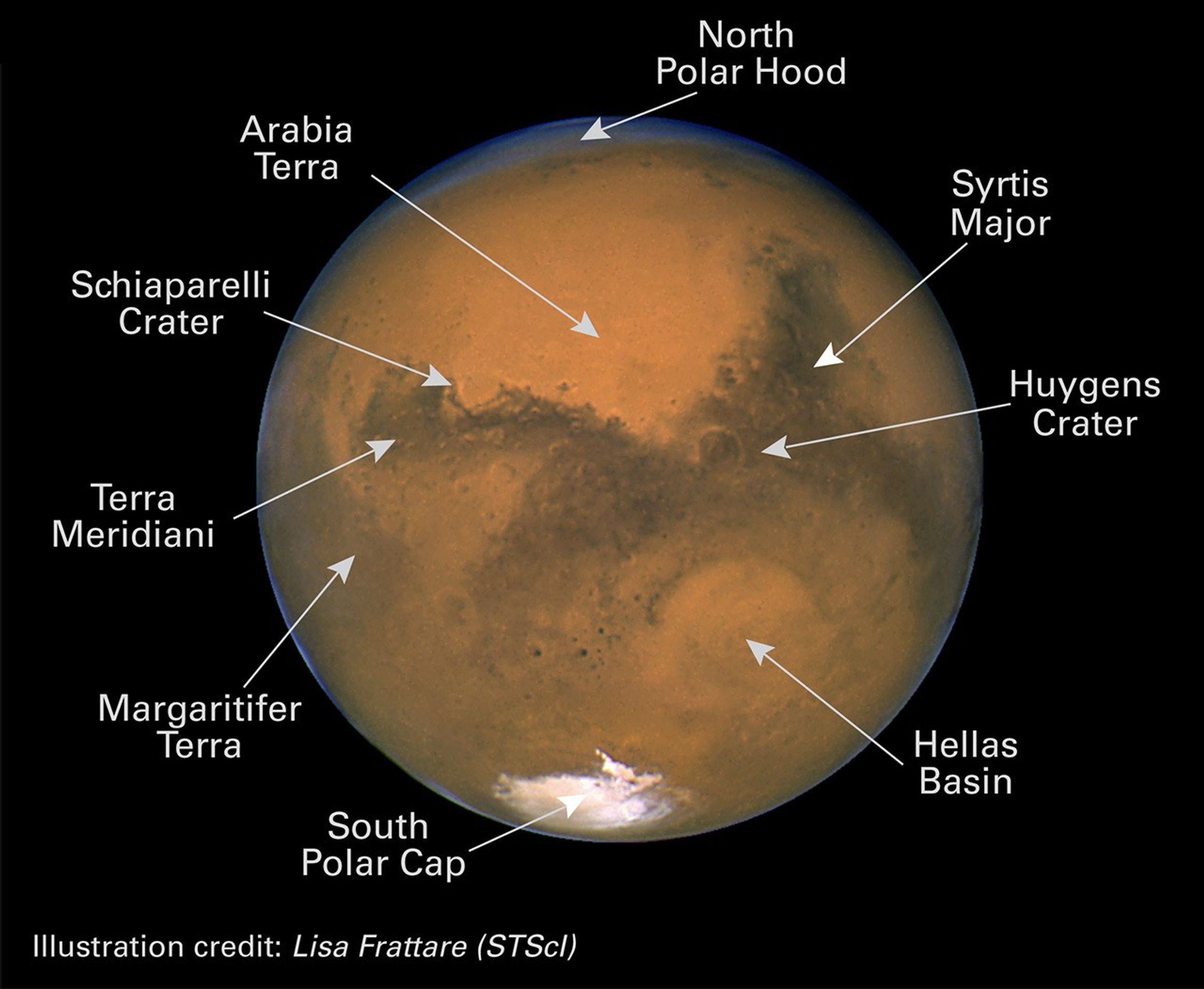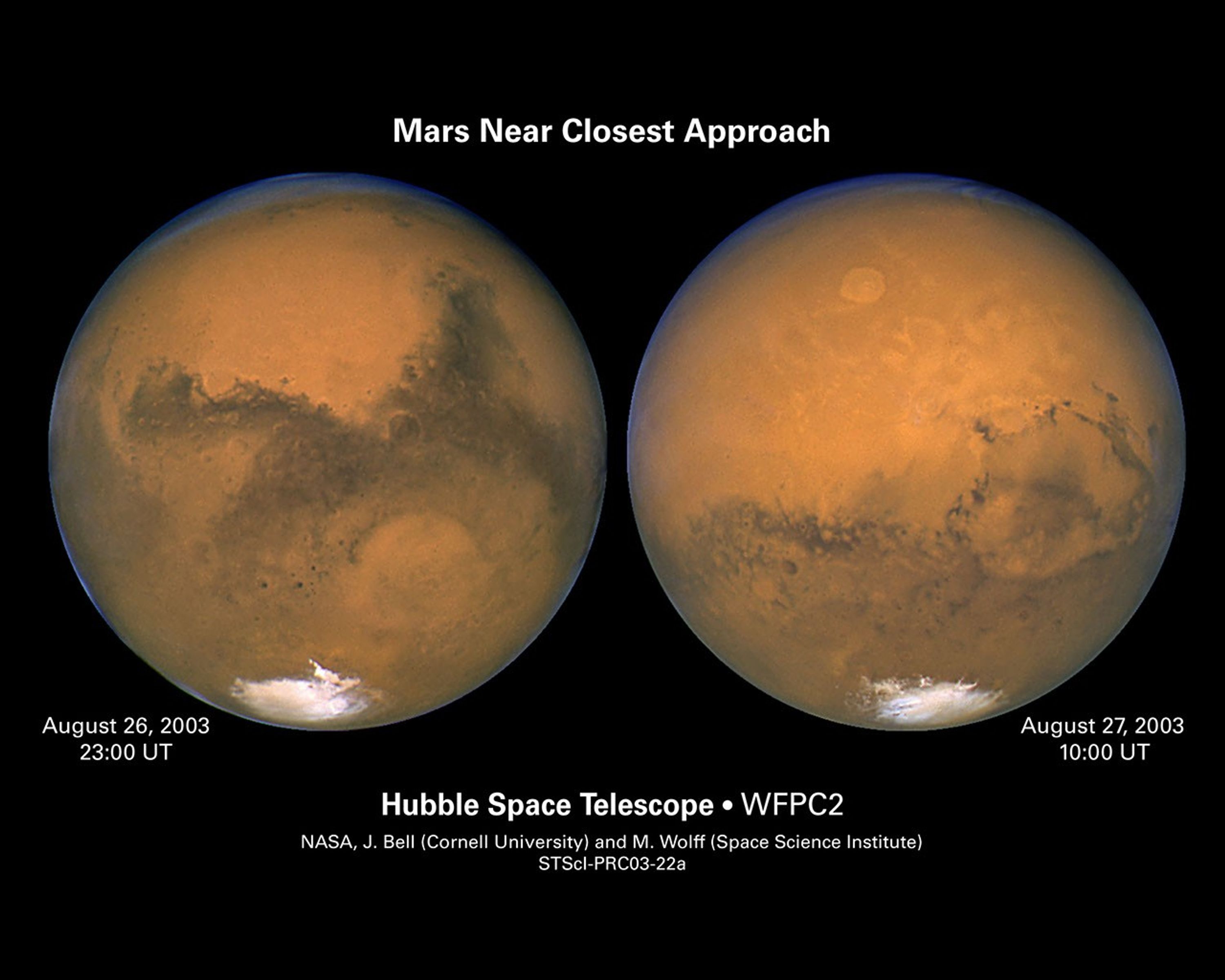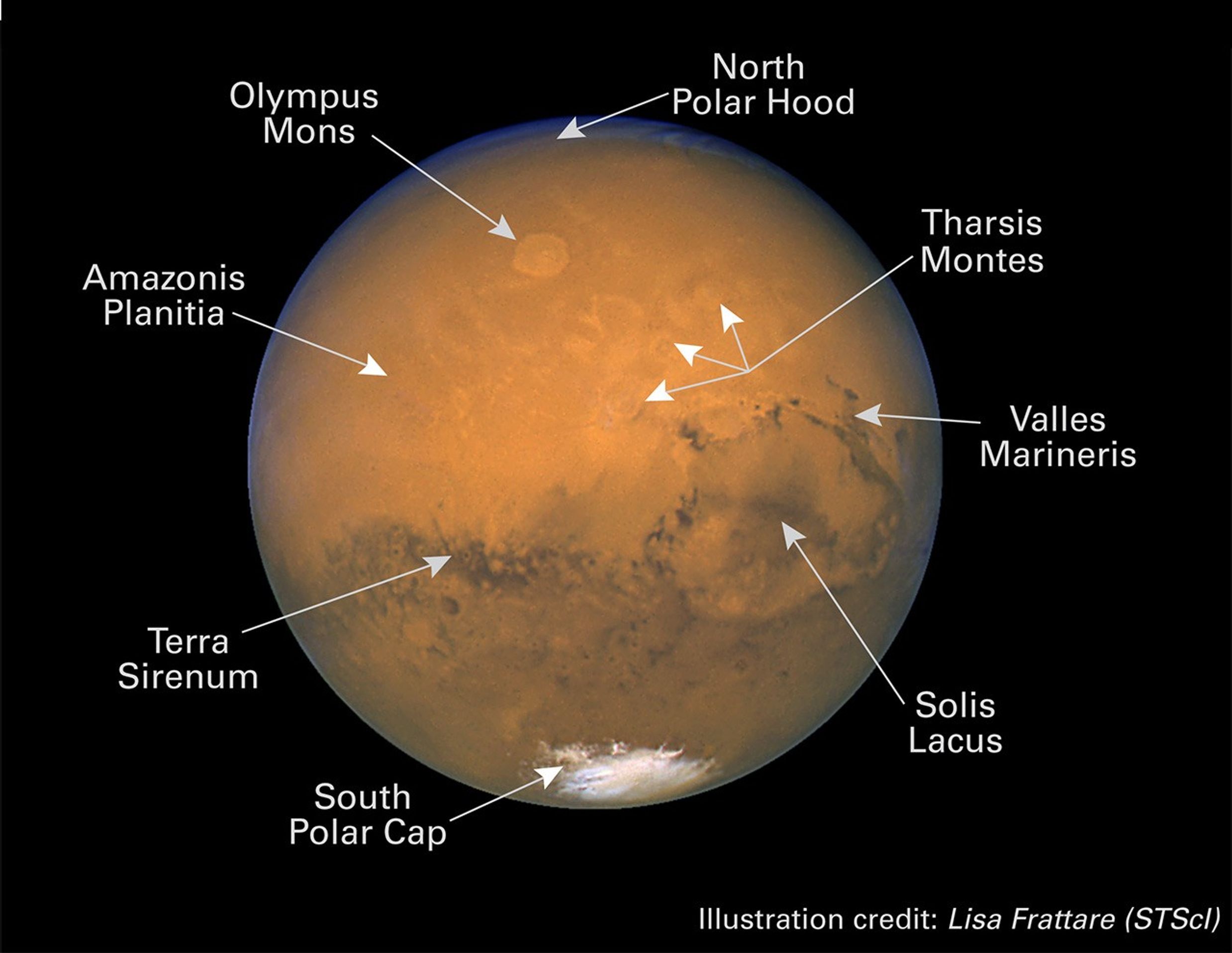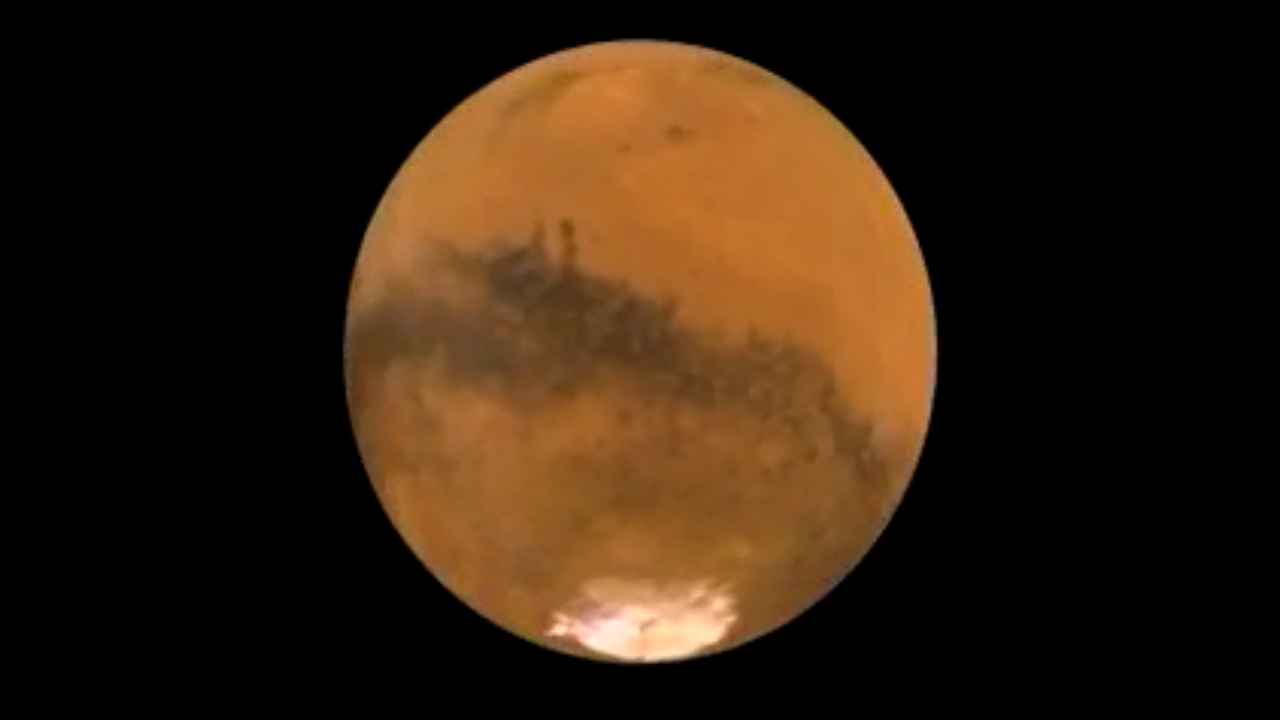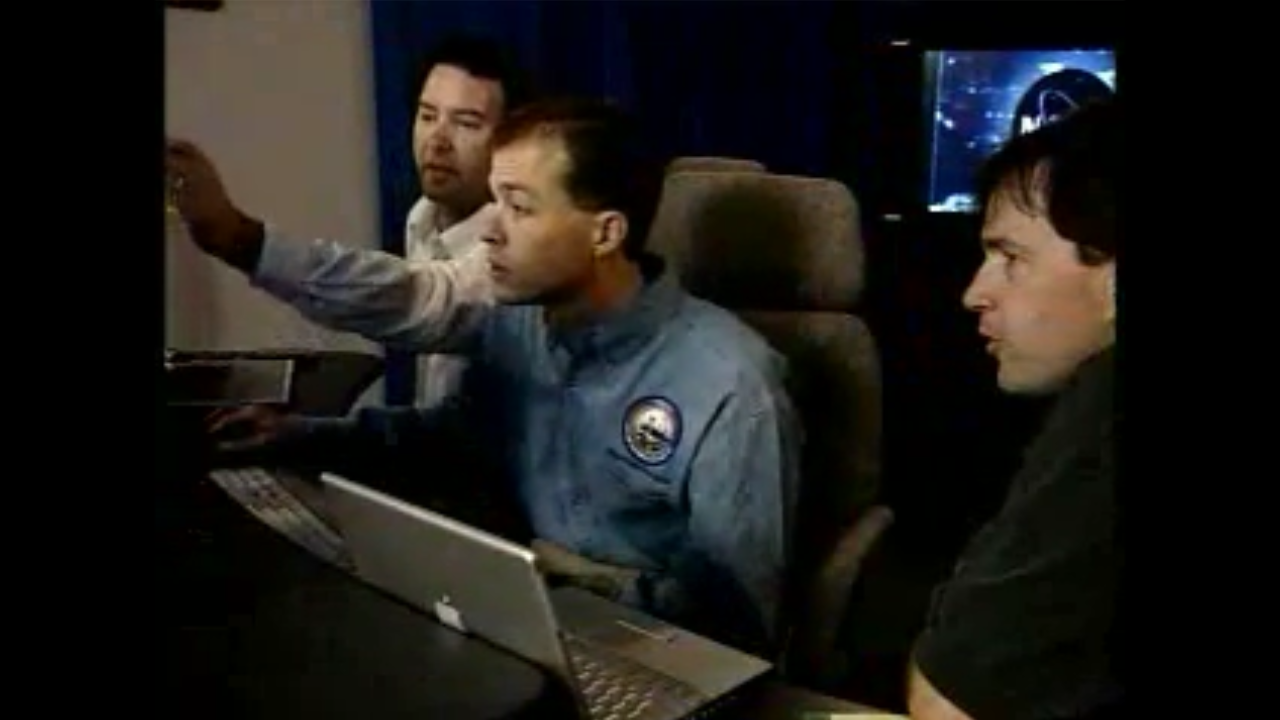BACKGROUND INFORMATION: MARS 'CLOSE ENCOUNTER' WITH EARTH
Mars is hurtling toward Earth at a rate of 22,000 miles an hour (36,000 kilometers an hour)! Not to worry. The two planets are just setting the stage for their closest encounter in recorded human history. On August 27, 2003, the third and fourth planets from the Sun will be within 35 million miles (56 million kilometers) of each other.
The reason the two planets will be unusually close: Opposition. Approximately every two years, the Earth's orbit catches up to Mars's orbit, aligning the Sun, Earth, and Mars in a straight line, so that Mars and the Sun are on "opposing" sides of Earth. This phenomenon is a result of the difference in orbital periods between Earth's orbit and Mars's orbit. While Earth takes the familiar 365 days to travel once around the Sun, Mars takes 687 Earth days to make its trip around the Sun. As a result, Earth can manage to make almost two full orbits in the time it takes Mars to make just one, resulting in the occurrence of Martian opposition every 26 months.
This year's opposition will be especially memorable, however, because the two planets will come closer to each other than they have been in nearly 60,000 years! This rare encounter is also due to the difference in Earth's orbit compared with that of Mars. While Earth is on a very near-circular orbit around the Sun, Mars sweeps out a large ellipse over its orbit. As a result, there are times when the planet is farthest from the Sun (aphelion) and when it is closest to the Sun (perihelion). These orbital dynamics result in Earth-Mars approaches ranging between 35 and 63 million miles. The situation the two planets are now facing is that Earth is near aphelion and Mars is at perihelion. In other words, Earth is farther out than normal, while Mars is moving closer to the Sun than usual. While there is no danger of the two planets colliding, they will be a mere 34.7 million miles (55.8 million kilometers) apart, enough to make the Red Planet appear slightly larger and brighter in our nighttime sky.
During past oppositions, many famous observations were made of the Red Planet. An opposition in November 1659 made it possible for Christiaan Huygens, a Dutch scientist and mathematician, to see and sketch the first accurate drawings of the Martian surface, which showed a major dark marking on the planet now known as Syrtis Major. Although farther away than usual during the opposition of 1666, Mars offered Gian Cassini the first view of its polar ice caps; Cassini was also able to calculate the rotation period of Mars from his opposition observations. Later, Schiaparelli made perhaps the most famous observation of Mars and its "canals," which, due to a misinterpretation, set the stage for speculation about life on Mars. Following that, during the perihelic opposition of 1877, Mars came close enough to Earth for Asaph Hall to resolve Mars's two small moons, which he named Phobos and Deimos.
The shorter-than-usual separation of these planets also makes this summer the ideal time to launch scientific expeditions to Mars. With a shorter distance to traverse, not as much fuel is needed to boost the mission to Mars, which leaves room for more valuable scientific instruments. NASA plans to launch a pair of Mars Exploration Rovers to investigate the Martian surface over the summer, as does the European Space Agency, with Beagle 2.
BACKGROUND INFORMATION: HUBBLE'S ROLE IN EXPLORING MARS
During the last opposition, a research team used the Hubble Space Telescope's Wide Field Planetary Camera 2 (WFPC2) to capture images of Martian polar ice caps, water ice clouds, and dust storms with unprecedented clarity and resolution. The success of these June 2001 images has inspired scientists to plan follow-up observations during this summer's opposition, when Mars will be almost 7 million miles closer than in 2001.
One team taking such observations will focus on the exact moments of closest approach, with 25 orbits of Hubble telescope time. Taking advantage of such a close opposition, this team anticipates a resolution that will enable them to distinguish Martian surface features between 3 and 6 miles (5 and 10 kilometers), which is comparable to the resolution of instruments on spacecraft, such as Mars Global Surveyor, that orbit the planet. "In that way, Hubble is like a NASA mission to Mars," says Jim Bell, the team's principal investigator.
Being able to study the planet in such high detail has researchers making plans to look at Mars like it has never been looked at before. Bell and his colleagues will use four different Hubble instruments: the Advanced Camera for Surveys (ACS), WFPC2, the Space Telescope Imaging Spectrograph (STIS), and the Near Infrared Camera and Multi-Object Spectrometer (NICMOS), in order to collect this valuable set of data. Near the time the Sun, Earth, and Mars approach alignment, images will be taken to give scientists information about the physical properties of the Martian surface and airborne dust, including particle size, shape, and possibly composition.
Especially unique about this mission is its use of ultraviolet spectroscopy and polarimetry. Using STIS, Bell's team will scan the surface of the Red Planet at ultraviolet wavelengths, which will reveal information about the composition and physical properties of the surface, as well as the atmospheric ozone, which will provide clues about the planet's water vapor. These measurements will compliment those of previous Mars missions and observations. For example, following up on their 1997 observations and recent Mars Odyssey orbiter findings, the team will use NICMOS to look for water-bearing minerals. Also, the team plans to survey regions of Mars that were observed in 2001, when dust storms were present. This time, those regions will be free of dust storms. By comparing both sets of data, Bell's team will be able to extrapolate information about the nature of dust particles on Mars. STIS spectroscopy, attempted during the opposition of 2001, has become a major tool for this year's scientific investigation, confirming Bell's belief that "previous observations were important precursors for this mission."
Another major observation team will study the Red Planet as it approaches and recedes from its opposition position. This study will also use the ultraviolet imaging capabilities of Hubble's STIS to gain information about Mars that no other recent spacecraft has had the ability to do. The last spacecraft to carry such an instrument was Mariner 9 (1971), although the upcoming 2005 Mars Reconnaissance Orbiter will carry an ultraviolet camera (MARCI). This unique Hubble observation allows researchers "to separate various components of the atmosphere - dust, water ice, background gas," says Phil James of the University of Toledo. James also cites similar observations during the dust storm in 2001, which allowed scientists to better understand the properties of Martian dust particles by examining how they scattered ultraviolet light. During the months preceding and following opposition - about once a month - the program will take STIS spectra and ACS images during two consecutive orbits.
Finally, in February 2004, a last observation will be done simultaneously with the Mars Exploration Rover Mission. This year's observations will give researchers the final piece of the puzzle to the weather patterns of the Martian year, the "classic dust storm season." When compiled with observations from years past, James and his colleagues hope to create a time line of the atmospheric observations of Mars that spans the entire Martian year. While James does not expect any new discoveries with this year's ACS images, he says the camera will provide high-resolution photographs of Mars (at 7.33 kilometers per pixel) in August. This sharp image will be useful to compare with the Mars Orbiter Camera's high-resolution maps of the Martian surface; thus, this complimentary data will be like a weather satellite giving Earth the full view of what is happening on Mars.


